Homemade Fresh Feta Cheese
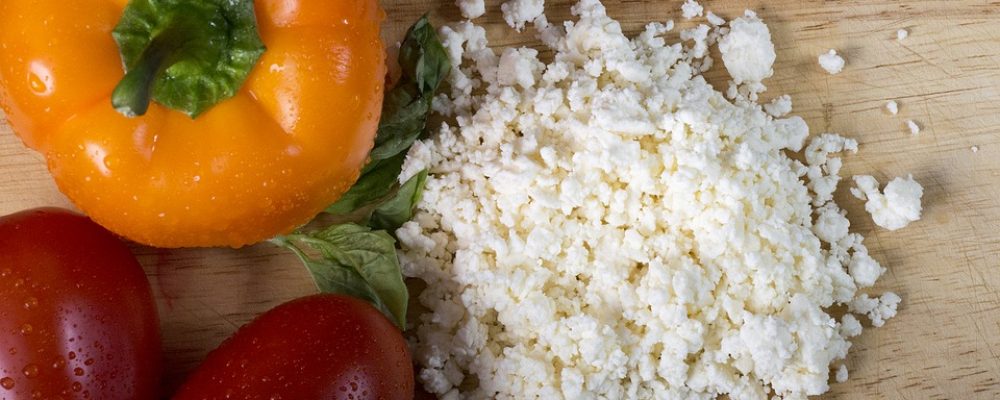
Feta has its origins in Greece. It is really popular and easy to make at home. It’s a great summer cheese, wonderful on salads and pizza. It can be consumed after a day of salting or can be aged in a salty brine for up to a year.
To see some simple dishes you can make using your homemade cheese or other cheeses, check out our page Recipes Using Cheese. For a more detailed account on making cheese at home, visit our post How to Make Cheese at Home.
For supplies needed and where to find them, you can visit my Cheese Making Kit review page where I share my opinions and experience using different products and tools.
Ingredients:
- 4 L/ 1 Gal of pasteurized or raw milk ( homo or non-homo)
- 4 tbsp of buttermilk with active bacteria, or ½ tsp freeze dried starter culture. You can order cheese culture here.
- 2 tbsp of plain yogurt with active bacteria or 1/4 tsp of freeze dried yogurt culture. You can buy this culture here.
- ¼ of a rennet tablet or liquid rennet (according to the suppliers recommendation) mixed in ⅛ cup of cold water. You can order rennet here.
Utensils needed:
- Pot to comfortably hold the milk
- Sharp knife
- Whisk
- Pasta strainer
- Kitchen strainer
- Cheese mould or cheesecloth
- Optional: pH meter
Procedure:
- Pour your milk into a pot and heat it up to 35C/95F.
- Stir in the buttermilk/ starter and the yogurt. Cover the pot and leave it for one hour.
- If you have a pH meter: After an hour the pH should be below 6.6. If not, wait until it is.
- After an hour, re-heat the milk to 35 C/ 95 F and add the rennet. Make sure that the rennet is always mixed with some cold water. Never add non-diluted rennet directly into the milk. Stir the rennet/water mix into the milk, then let the milk sit for 30 minutes.
- After 30 minutes the milk should have coagulated. It should have made a firm coagulant. If this is not the case, wait another 5 minutes.
- Take a sharp knife and cut the coagulant into 1 cm/1/2 inch squares. Wait 5 minutes and you will see the whey separating from the curd.
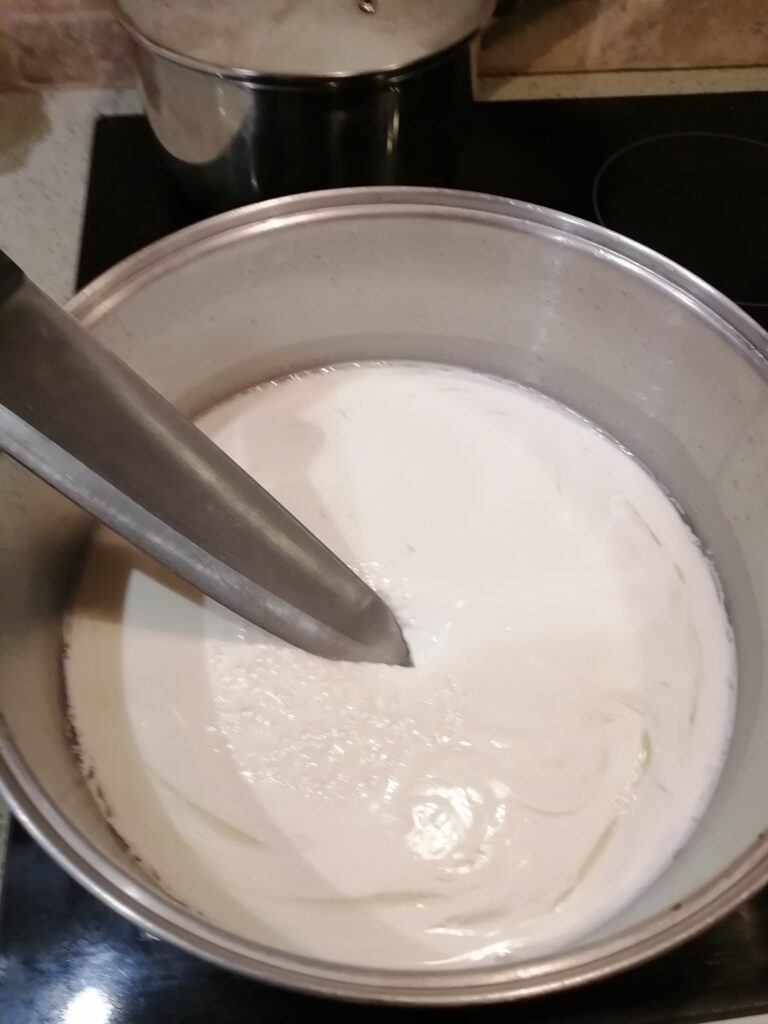
After adding the rennet the milk has coagulated

Cutting the curd into squares
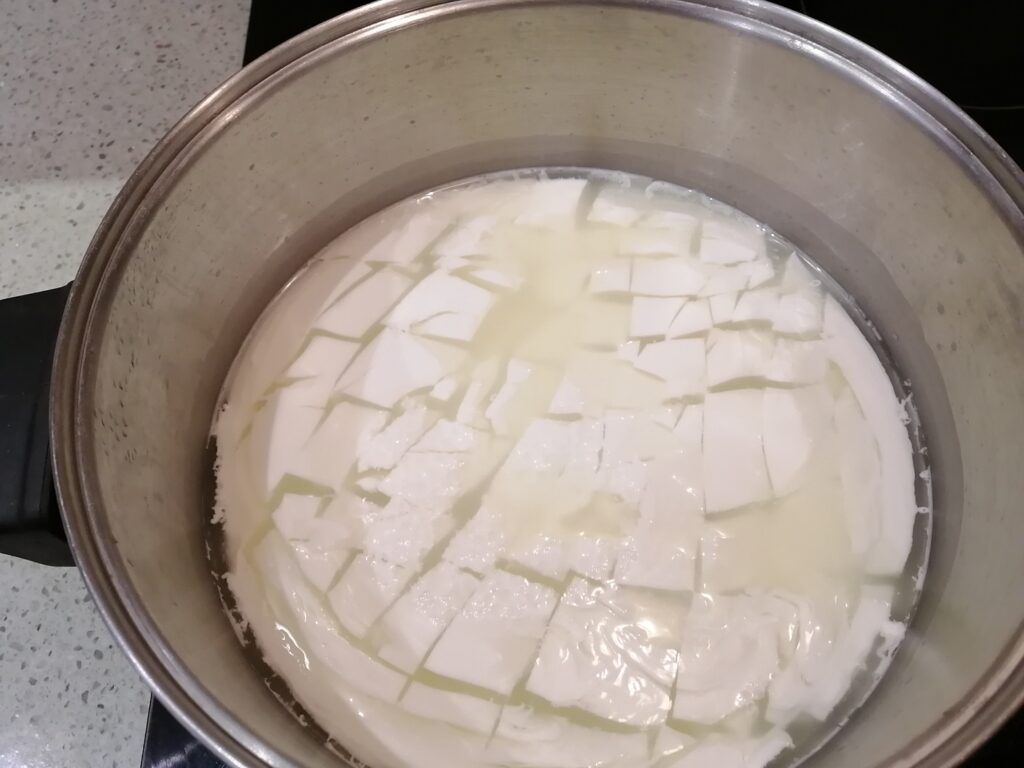
The curd starts to separate from the whey.
- Take the whisk and stir slowly, further cutting up the curd. Once the curd is cut into corn size pieces and once the curd clearly separates from the whey, let the curd sit for 90 minutes.
- Ideally the curd should keep its temperature. You can either cover the pot with a blanket, or use a heat blanket. The “warm” setting in your oven might work as well, just make sure the curd doesn’t get any warmer than 38C/100F. You can also heat up the curd after 40 minutes to 35/95 again, stirring it gently.
- The curd is now heavier than the whey and will settle to the bottom of the pan.
- After 90 minutes the curd will have firmed up a lot. If you have a pH meter, the pH should be at about 6.30 or lower. Notice the difference from when you first cut the curd to now.
- Place the mould into a pasta strainer and scoop the curd out of the pan into the mould. If you don’t have a cheese mould, line the pasta strainer with the cheesecloth and gently pour the curd into it.
- Put 1 L/1 qrt of whey aside. You will need this later to make a brine. You can also save the whey to make Ricotta.
- You can also carefully pour the entire pan into the mould or the cheesecloth, just go slow and give the whey time to flow off. Make sure to keep the whey, if you intend to brine the feta after, see below.
- Flip the mould every two hours, about 4 times, so the cheese becomes nice and even. If you are using cheesecloth, mould the cheese inside the cloth into a ball or square. Make sure the cheese is at least 3 cm/ 1 inch thick.
- Let it sit in the mould or the cloth at room temperature for 20 hours. Let the whey, that you put aside, sit at room temperature for the same amount of time.
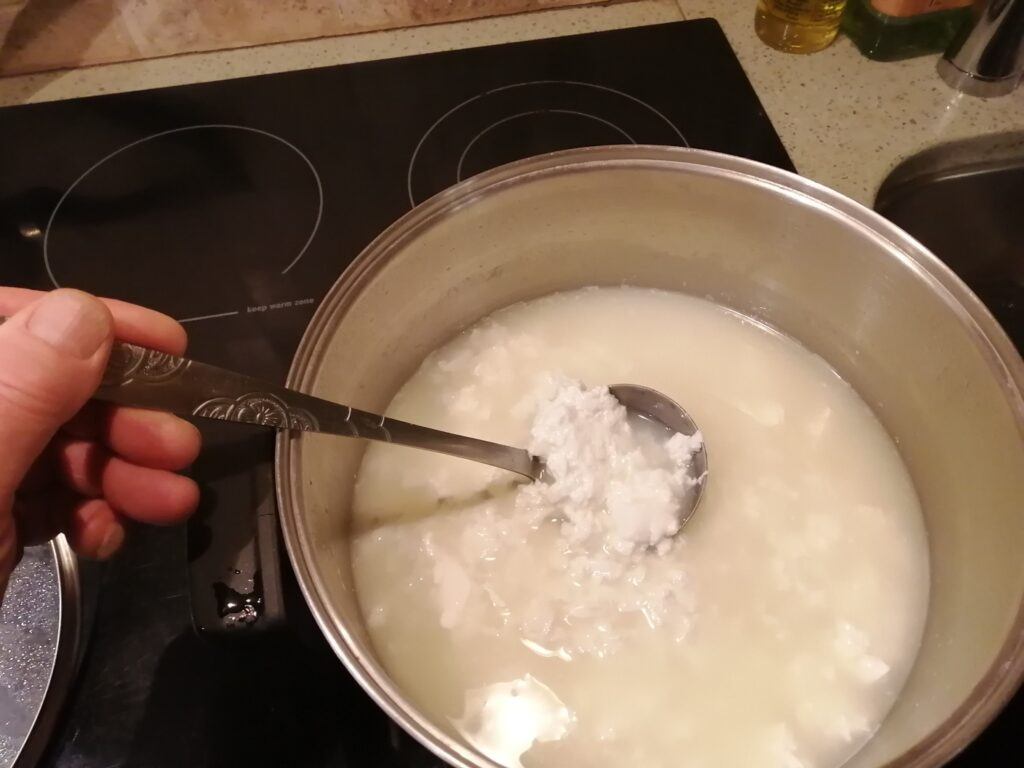
The curd has settled to the bottom of the pan
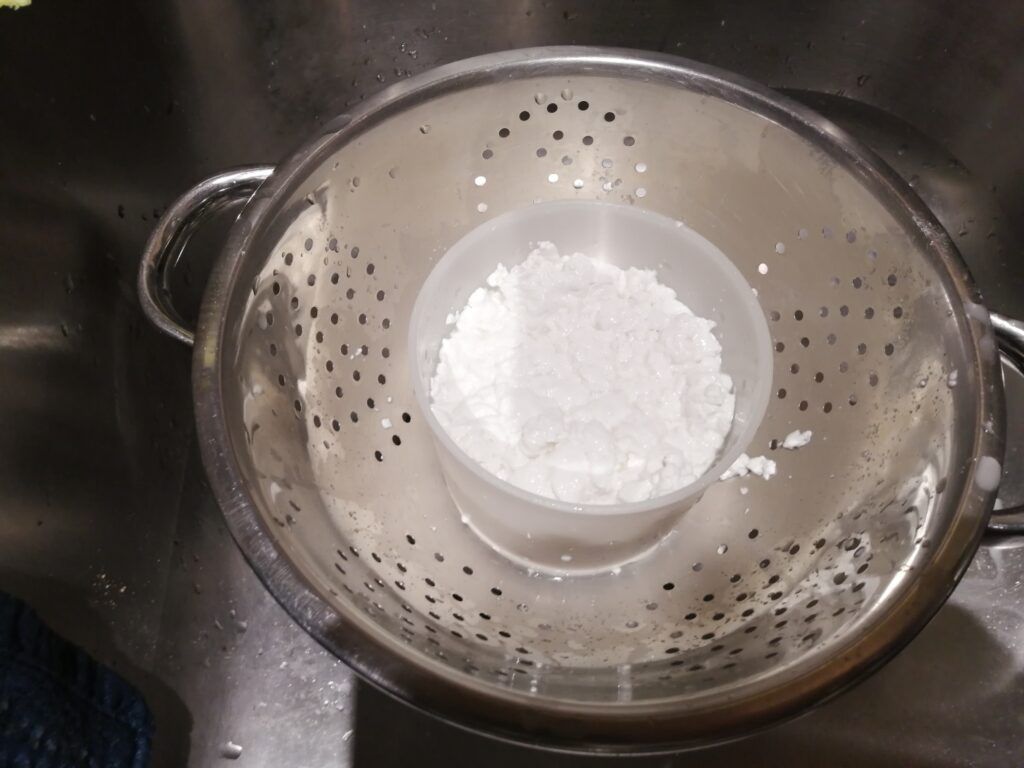
The curd drains in the mold
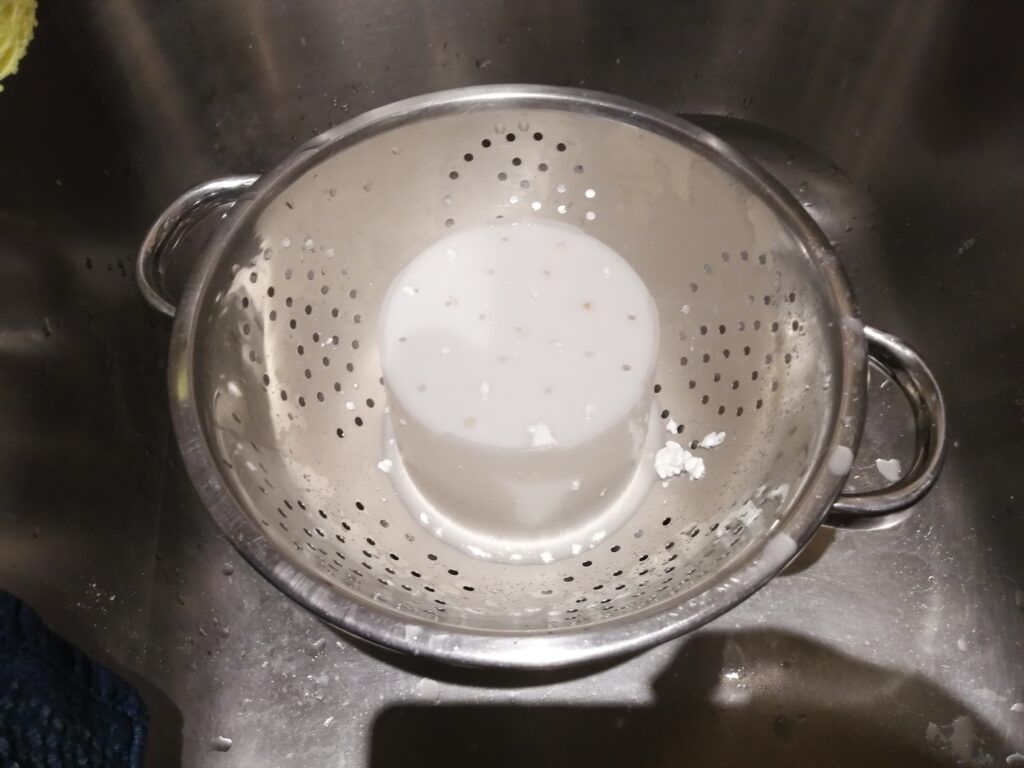
Flipping the mold will make an even looking cheese.
- The draining time depends a lot on the type of milk you are using and also on how active your culture is. The feta should be firm and well formed before removed from the mould. You can’t go wrong by leaving it in the mould longer. It’s better to leave it in there too long than not long enough. If you have a pH meter the pH in the feta after 20 hours should be 4.9 or lower.
- Now we need to salt it. Feta is a salty cheese. There are two options:
1. Dry Salting: Place the cheese puck into a bowl and generously sprinkle salt over it. Make sure the entire cheese is covered in salt. After a day, place the feta into a zip lock bag or a tupperware container and refrigerate it for 2 days. If you consume it right after salting, you will find that the outside will be very salty and the centre will have hardly any salt. After 2 days the Feta will be ready to eat. You can adjust the saltiness by salting it longer, or less than a day.
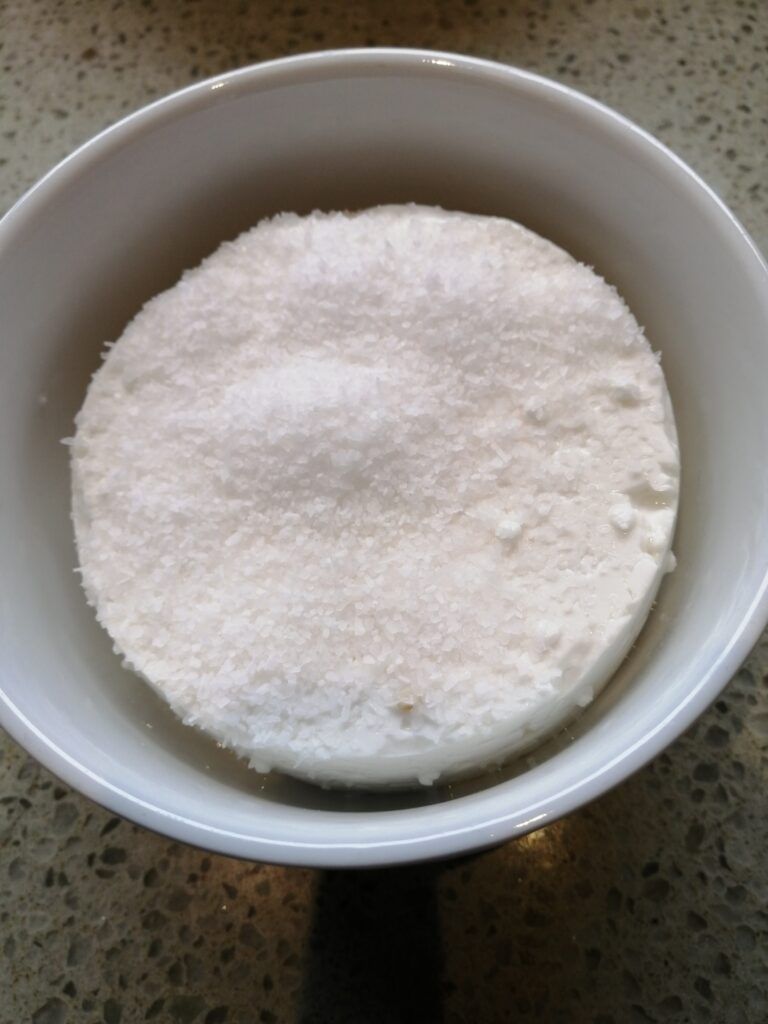
Brining: You can also salt your feta in the brine. Fill 1 L/ 1 qrt of whey (which you kept aside from the day before) into a bowl then add 6 Tbsp of salt. Stir well until the salt is dissolved. Place the cheese puck into a tupperware and fill it with the brine. Make sure the cheese floats. Cover the tupperware and place it in the fridge. After 2 days the feta will be ready to consume, However; if you wait a week or even longer it will get better and better.
In this brine you can leave the feta for many months.
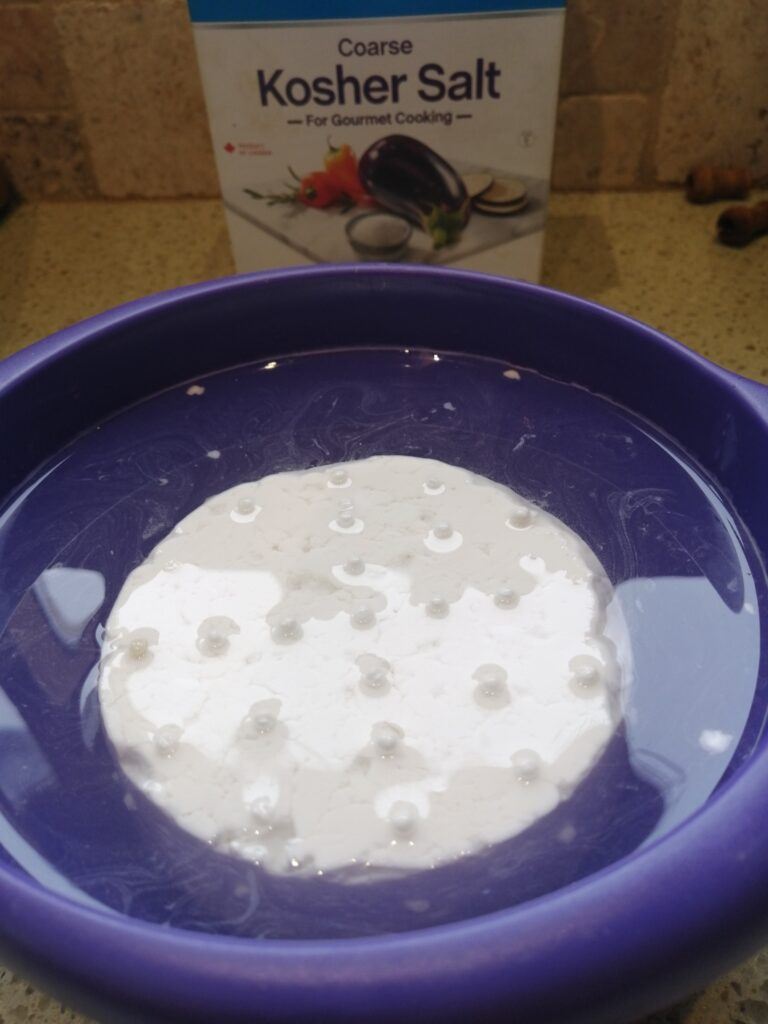
Troubleshoot
- After adding the rennet, the milk did not coagulate. That can happen when your rennet is not active anymore.Your rennet can lose activity if it is too old, or when it is mixed with chlorinated water. This could also happen if your milk was too hot. Make sure your thermometer is accurate.
- After pouring the curds into the mould or cheesecloth, it hardly drains, the cheese stays liquid. That can happen if your culture is not active and the curd never started to acidify. You can try to salvage the cheese by pressing it and just giving it 2 to 3 days time to drain. Make sure to use an active starter, and an accurate thermometer.
- After brining the feta in a salty brine, the cheese is slimy on the outside. This can happen if your cheese didn’t acidify enough. Make sure to keep the cheese warm after it drains in the mould. It could also be that your brine wasn’t salty enough or not acidic enough, which happens if you used water instead of whey to make the brine.
Enjoy!!!



